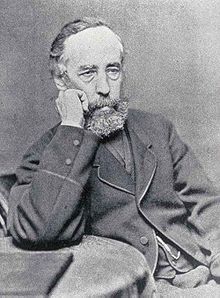Remarkable Scottish scientist James Croll who developed revolutionary theory of climate change
These days there is much concentration on the issue of climate change. The main debate now is focused on the issue of Global Warming and the current warming of the Earth's climate being due to human activities. However, research of geological records going back millions of years, have indicated that there have been a large number of variations in the Earth’s climate. A variety of natural factors have caused this, including the Earth’s orbit, changes in the sun, volcanoes and CO2 levels. Nevertheless, the term Global Warming commonly refers to the observed and continuing increase in average air and ocean temperatures since the 1800’s caused mainly by emissions of greenhouse gases (GHGs) in the modern industrial economy. International Panel on Climate Change (IPCC) research shows it 90% likely that human activity has caused more recent global warming.
Although even the theory of natural climate change has not always been accepted. It was only in the 19th century that the idea gained credibility, when a Scottish scientist developed a revolutionary theory of climate change based on the orbit of the Earth. This expanded on the work undertaken by Swiss geologist and biologist Louis Agassiz (May 28, 1807 – December 14, 1873). His studies on glaciers resulted in 1837 on his proposal that the Earth had been subjected to a past ice age. An idea he further developed after geological studies in Scotland in 1840, undertaken along with geologist and palaeontologist William Buckland (12 March 1784 – 14 August 1856). At the time many of his ideas were rejected. The theory of ice ages though was significantly advanced by the work undertaken by Scottish scientist James Croll (2 January 1821 – 15 December 1890) who developed a theory of climate change based on changes in the Earth's orbit. James Croll's theory predicted multiple ice ages. His basic ideas have since been progressed and it is now accepted that he unlocked the secret of how ice ages happen. New research now shows there to have been 10 ice ages in the last million years, with the next one due to happen in the next 40 to 50 thousand years.
Perhaps just as interesting though is the story of James Croll himself. Born the son of a Scottish crofter, James Croll left school at 13. During his early life he worked as a labourer, an apprentice wheelwright, a tea merchant, managed a temperance hotel, then as an insurance agent. In 1859, he took the job of janitor at the museum of the Andersonian University in Glasgow. He had always had an enquiring mind and was an avid reader of science texts. However, it was in the position of university janitor that he was able to use the university library to get access to books, and taught himself physics and astronomy to develop his ideas. His ideas on the links between ice ages and variations in the Earth's orbit led to his theory being published in the Philosophical Magazine in 1864, attributed to "James Croll, Anderson's University". This resulted in a position in the Geological Survey of Scotland's Edinburgh office, as keeper of maps and correspondence. He went on to publish a number of books and papers, including Climate and Time, in Their Geological Relations in 1875. In 1876, he was elected Fellow of the Royal Society, and awarded an honorary degree by the University of St Andrews. His story was a remarkable one; a self-educated man from humble origins, James Croll, whose job as a university janitor helped him solve the mystery of why Earth periodically freezes over.







